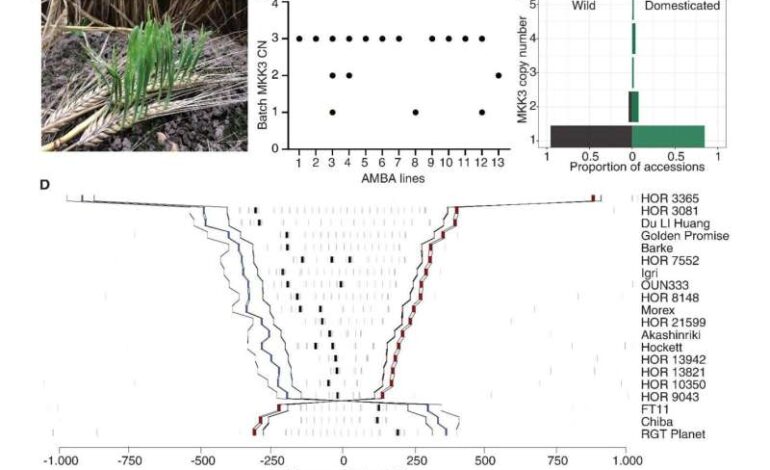Researchers Identify Genetic Mechanism Behind Early Barley Sprouting

Researchers from the Carlsberg Research Laboratory in Denmark have identified a genetic mechanism that controls the timing of barley sprouting, a significant breakthrough in addressing pre-harvest sprouting (PHS). This phenomenon, which occurs when grains germinate on the plant before harvest, leads to billions of dollars in crop losses globally each year. The findings were published on November 7, 2025, in the journal Science.
PHS poses a serious threat to the agricultural industry, primarily triggered by warm and moist weather conditions. While early farmers selected barley varieties with reduced seed dormancy for quicker planting, this trait has resulted in crops that are increasingly vulnerable to sprouting prematurely. The research team sought to understand the genetic factors underpinning this issue by focusing on the MKK3 gene, known for its role in regulating dormancy in barley and other cereal crops.
Understanding the Genetic Complexity of Barley
The researchers analyzed the DNA of over 1,000 barley varieties from diverse farms and seed banks worldwide. They also cultivated different barley strains in field conditions over multiple seasons, purposely exposing half of them to environments that would induce PHS. This comparative analysis was essential for understanding the differences in grain quality and dormancy.
Key findings reveal that multiple variants of the MKK3 gene influence dormancy rather than a single version. Wild barley contains one copy of MKK3, while domesticated varieties possess several copies. The implication is clear: the more MKK3 genes a barley plant has, the stronger the signal to sprout and the shorter its dormancy period.
Furthermore, the study explored how these MKK3 variants have evolved in response to climate challenges and agricultural practices. Some variants were hyperactive, preferred by farmers in Northern Europe for their superior malting qualities. Conversely, variants that exhibited high dormancy were favored in wetter climates, such as regions in East Asia, allowing crops to withstand monsoon conditions without sprouting prematurely.
Implications for Future Barley Crops
With these significant genetic insights, the authors of the study believe modern farmers can cultivate barley varieties tailored to specific environmental conditions. “Our work shows that understanding the genetic complexity of dormancy can help breeders develop barley that is both productive and resilient to climate change,” stated one of the researchers.
The research not only highlights the intricate relationship between genetics and agricultural practices but also offers hope for improving crop yields in the face of changing climate conditions. As farmers face increasing challenges from unpredictable weather patterns, these findings could be crucial in ensuring global food security.
This article was authored by Paul Arnold, edited by Gaby Clark, and reviewed for accuracy by Robert Egan. The research underscores the importance of continued investment in agricultural science to address pressing food supply issues. For those interested in supporting independent science journalism, consider making a donation to help sustain this vital work.
For more detailed findings, refer to the original study: Morten E. Jørgensen et al, “Postdomestication selection of MKK3 shaped seed dormancy and end-use traits in barley,” published in Science (2025), DOI: 10.1126/science.adx2022.






